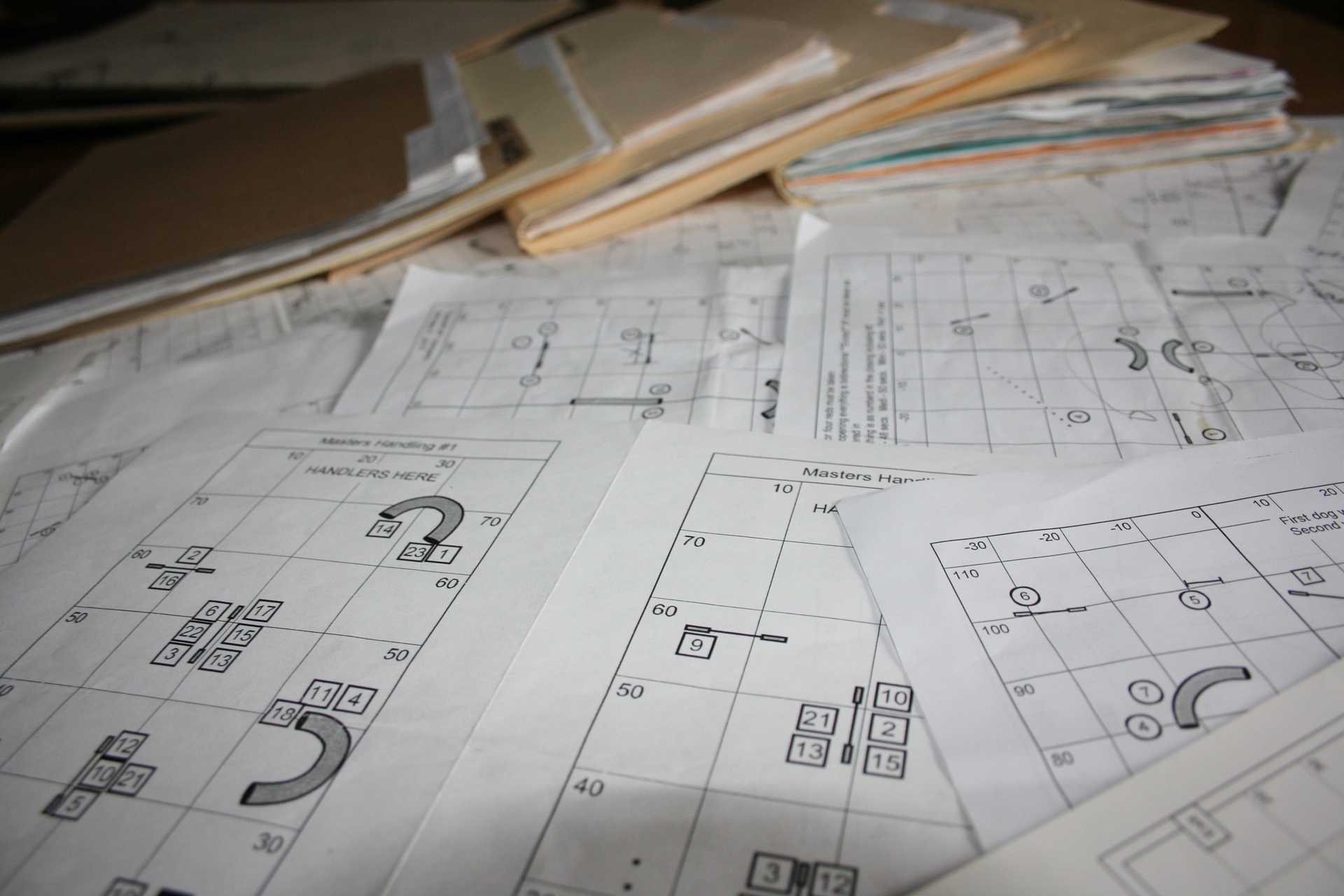Dana Pike Advanced Class Course - Mar 03 2005
10 Mar 2005
Here’s another challenging Dana Pike Jumpers-style course. Dana always comes up with class courses where there are many valid solutions for the challenges on the course; but the experience of running the course teaches you why one handling is more beneficial than another. Pay close attention to sequences 8-9-10, 13-14-15, and 16-17-18-19.

There is a lot going on in this course. Here’s a “play-by-play” of some of the challenges and different handling approaches to this course:
- Front Crossing Learning the Front Cross - VideoFront Cross from jump 2 to jump 3 tended to cause the dog to curl back to the handler after jump 3. Or, because the handler was ahead of the dog, caused the handler to go too "deep" towards jump 4. A Rear Cross Learning the Rear CrossRear Cross seemed to send the dog on a better line and further over jump 3 towards jump 4.
- Once the dog was going towards jump 4, most handlers tried not to go past jump 5. They stayed on the landing side of jump 5 and Front Crossed when the dog landed after jump 4, thereby turning the dog to the dog's right and inline for jumps 5 and 6. No good could come from handling the 3-4-5 Pin Wheel from within the pocket.
- All handlers took jumps 6-7 into the Weaves with the dog on the handler's right.
- From the weaves to jump 9 and into the tunnel, the handler needs to decide whether to turn the dog to their left or right. My first instinct was to do a 360 degree Post Turn Learning the Post TurnPost Turn/Shoulder Pull/Pivot Turn and keep Milo on a left lead (on my right) around jump 9 and into the tunnel. This gave a pretty wide loopy turn. Another approach was to keep the dog on the handler's right and Post Turn with a Front Cross, turning the dog to their left, to wrap the dog tightly around the jump post. The final, and for many teams most efficient, handling was to keep the dog on the handler's right but Front Cross before jump 8 with the dog turning to their right over the jump and then immediately Front Crossing again to keep the turn tight.
- Once the dog is in the tunnel start moving towards the weave poles. A slight tug on the Verbal Leash as the dog exits the tunnel to get them turning towards you.
- Getting Lateral Distance from the weaves helped handlers get ahead of their dogs for the 12-13-14 jump sequence followed by the 14-15-16 Serpentine Serpentine Handling TechniquesSerpentine Sequence.
- Being ahead of the dog after jump 13 was helpful because it allowed using a Front Cross Learning the Front Cross - VideoFront Cross on the Handler Line Using the Handler Line - Front/Rear/Blind Cross LineHandler Line - Front/Rear/Blind Cross Line between jumps 13 and 14 thereby keeping the dog away from off course jump 3.
- All handlers stayed to the left of jumps 14 and 15. By the time they reached jump 15 the dogs where getting ahead of the handlers so most handlers used a Rear Cross on the landing side of jump 15 (aka Tandem Turn). This setup the dogs on a straight line for jumps 16 and 17. Handlers then cut behind their dog to end up on the right of jump 16.
- Due to the approach to jump 17 the dogs turned to their left after the jump. There didn't seem to be any advantage to turning the dogs to their right over the jump. Depending on the speed of the dog and the handler it was possible to Post Turn wrap the dog to the right or Front Cross.
- An initially surprising problem, but obvious after running the course, was which way to turn the dog over jump 18. With most handlers keeping their dogs on their right after jump 17, a Front Cross wrap of the dog to their left "felt" most natural. But if you look at the dog's line after the turn they are perfectly lined up to take the wrong side of the tunnel after jump 19. So turning the dog onto a Right Lead before jump 18 setup the dog perfectly for jump 19 and the tunnel. So this also meant it was best to Front Cross the dog to wrap them tightly on jump 17 and pick the dog up on the handler's left after jump 17. Then Front Cross and wrap jump 18 and pick the dog up on the handler's right and run towards the correct tunnel side.
- The rest of the course was a straight forward running sequence.
I’m just glad this course was indoors, if we ran it outdoors Milo would really have cleaned my clock on the long jumping sequence up the middle. Here’s another great sequence Dana devised using the same obstacle setup.
If you enjoyed this article won't you please:  Thanks!
Thanks!
